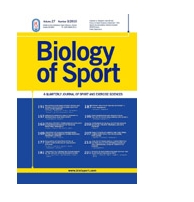Gallo G1,2, Bosio A1, Martin M1, Morelli A1, Azzolini M1, Guercilena L3, Larrazabal J3, Rampinini E1
- Human Performance Laboratory, MAPEI Sport Research Centre, Olgiate Olona, Italy
- Centro Polifunzionale di Scienze Motorie, University of Genoa, Genoa, Italy
- Trek-Segafredo, Deinze, Belgium

Abstract
Testing short-term (4–8 weeks) correlations between training dose and performance in professional road cyclists can help improve their training and performance. Multilevel mixed-modeling was used to correlate training dose (Time, Edwards’ Trimp-eTRIMP, Training Stress Score-TSS, time spent in power output zones-Z1, Z2, Z3, Polarization Index-PI) and Record Power Output (RPO) over 1 minute (RPO1), 5 (RPO5), 20 (RPO20), and 40 minutes (RPO40) across four different time periods: training dose of the previous month with RPOs of the subsequent month (Monthly-analysis); training dose of the 8 weeks preceding All, Grand tours, One-day races with RPOs of these races. In Monthly-analysis, small positive relationships between all the training dose parameters, except for PI, and RPO1, RPO5, RPO20, RPO40 were found (p ≤ 0.001). In Grand tours analysis, Z3 showed a positive association with RPO40 (r: 0.45; p = 0.007, moderate) and was positively related to RPO1 and RPO5 (r between 0.32 and 0.34; p = 0.053–0.059, moderate). PI was small positively related to RPO1 (r = 0.29, p = 0.076, small). In One-day races analysis, eTRIMP was positively related to RPO5 (r = 0.30, p = 0.035, moderate), Z1 negatively related to RPO40 (r = -0.31, p = 0.031, moderate), PI positively related to RPO5 (r = 0.24, p = 0.068, small) and Z2 was negatively related to RPO20 (r = -0.29, p = 0.051, small).
A certain degree of responsiveness to training dose exists in professional road cyclists. To improve RPOs an appropriate preparation pattern seems to be increasing high intensity training for Grand Tours and fostering high intensity and overall training load (eTRIMP and TSS) in a more polarized-fashion for one-day races. Systematic and precise data collection during training and racing is highly advocated.
Biol Sport. 2023 Apr; 40(2): 485–495. Published online 2022 Jul 21
PMCID: PMC10108756 PMID: 37077803 DOI: 10.4081/ejtm.2023.11093